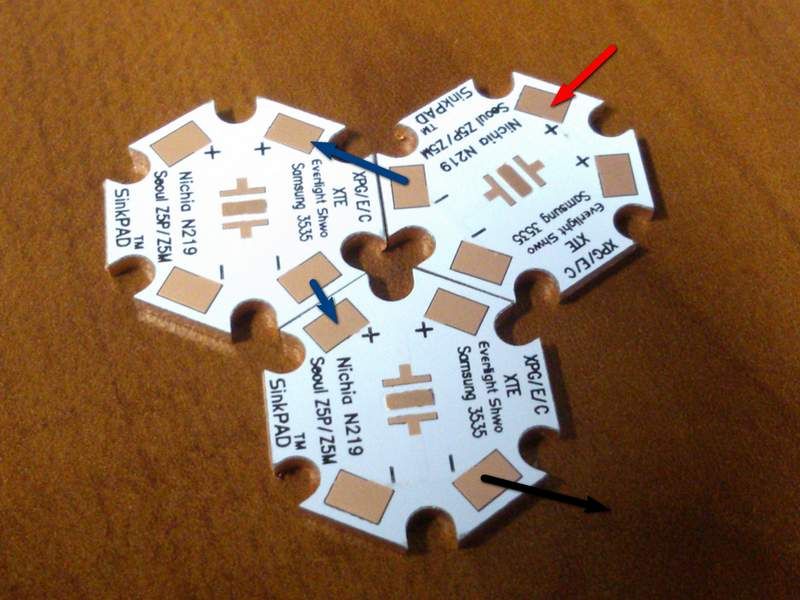Ooh, a big pile of shiny!

Grab the tin snips, get rid of the threaded part

Gone, two of them trimmed off clean with a little end mill in the poor man's vertical mill (a.k.a. $129 drill press).

Crap! Still don't fit. Now what?

More power tools, that's what. You'll want to have a bowl of water nearby for dunking, they get HOT. When the water from the last dunking starts to boil, dunk again.

The plating on this batch doesn't survive the heat, it's all been scraped off. It wouldn't have made it through this level of abuse without scratches anyway. Final polish will be the last step, after they're all made into one unit.
Here's what you get after the first facet is cut. The only critical dimension here is the total depth, and even that's not critical-critical, as there will be lots of filing and fiddling before this is complete.
The stars are glued down just to have a fixed reference to get the critical-critical angle of that second facet marked, see poor man's machinist dye (a.k.a. red sharpie).

More later, this uploading pics one at a time thing is annoying...





